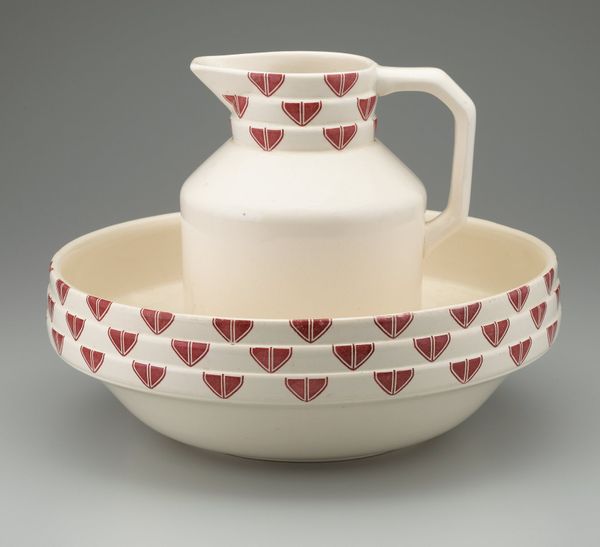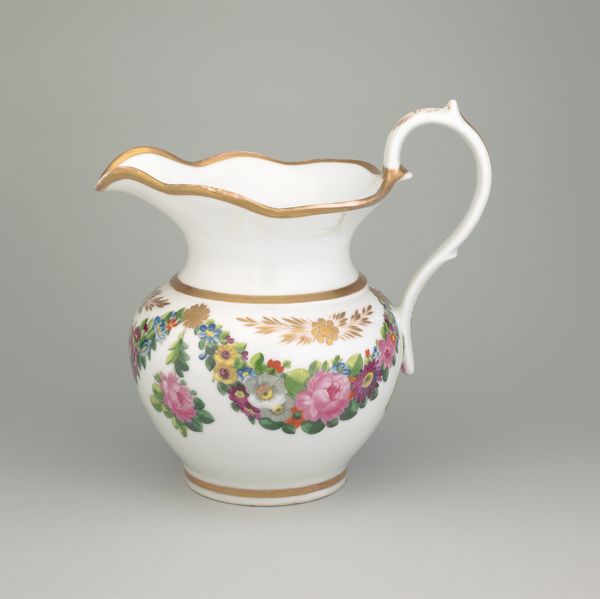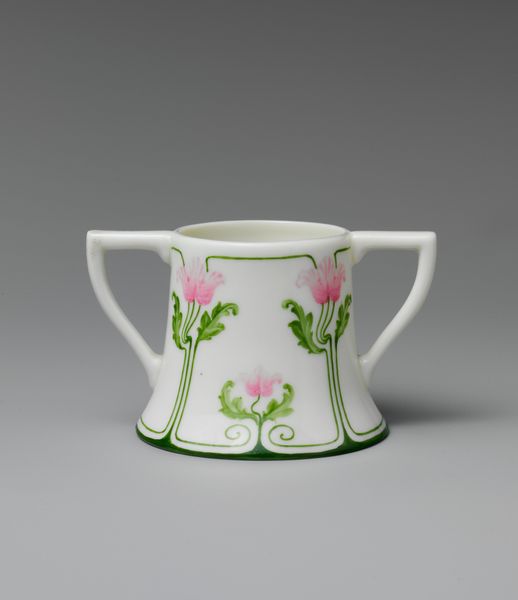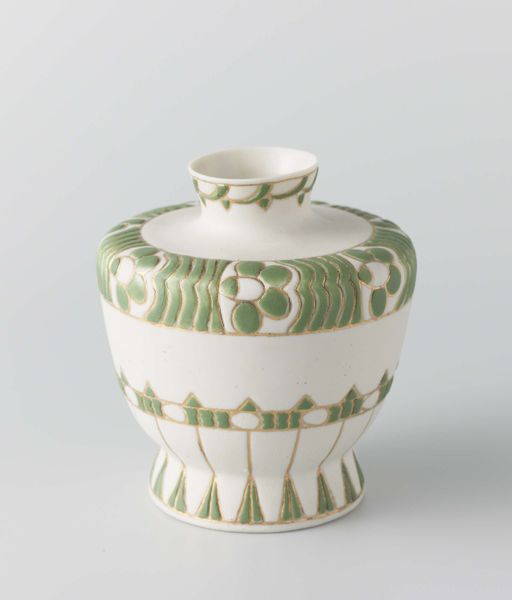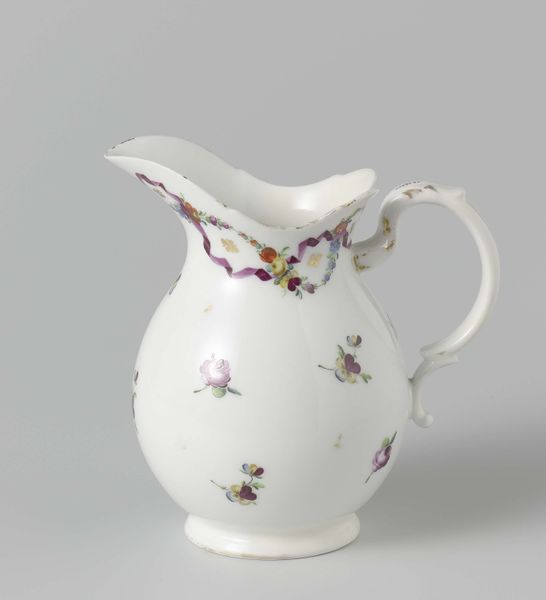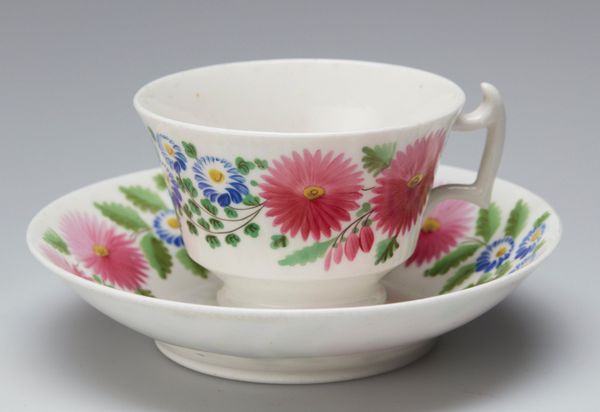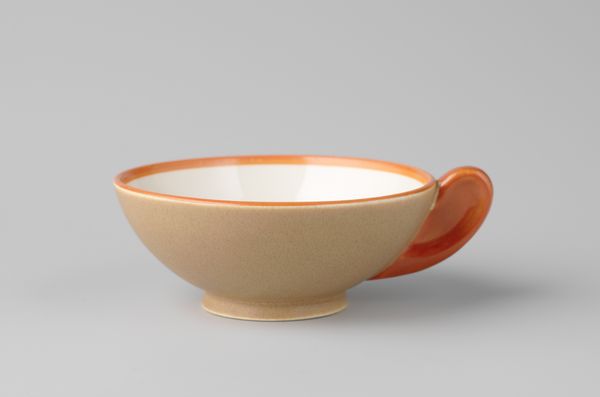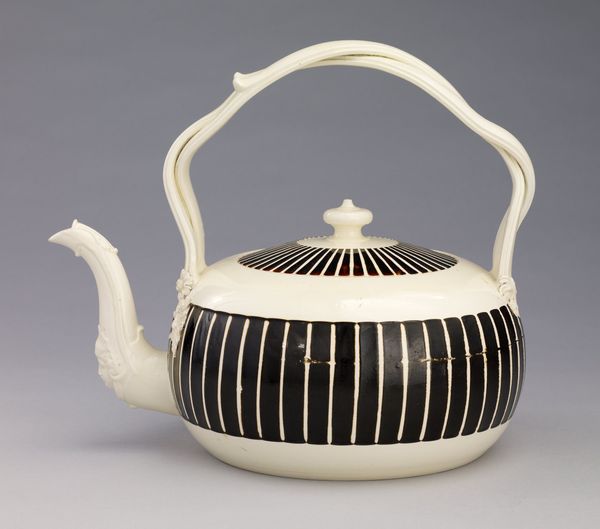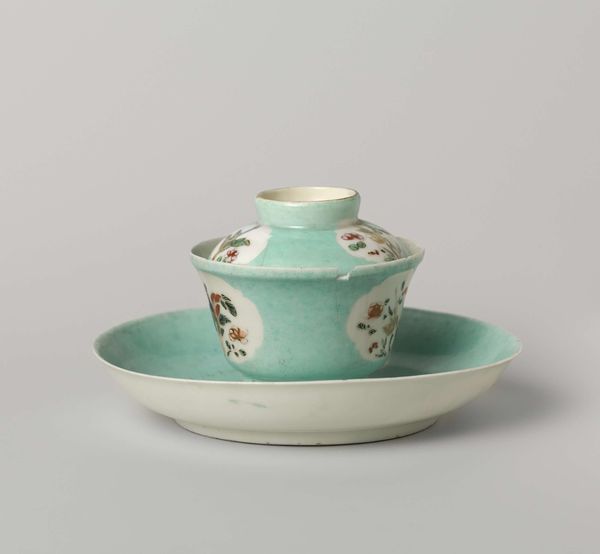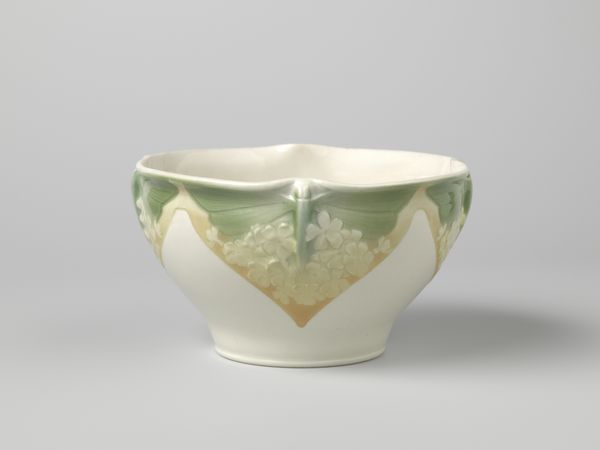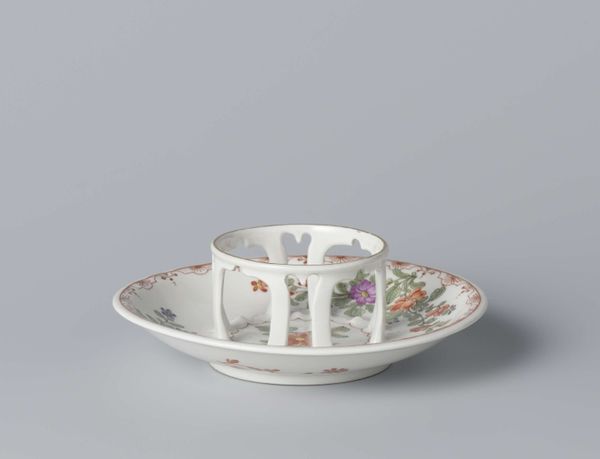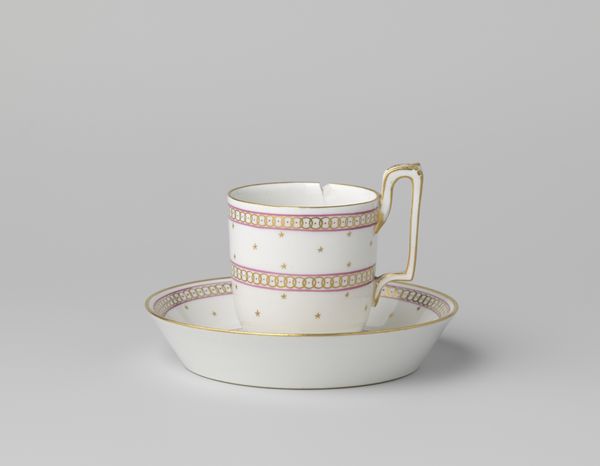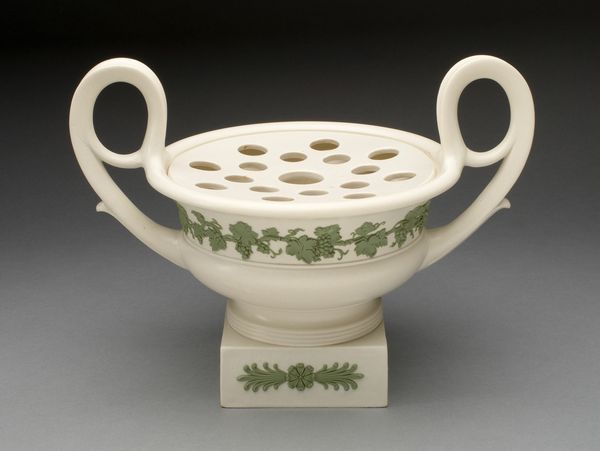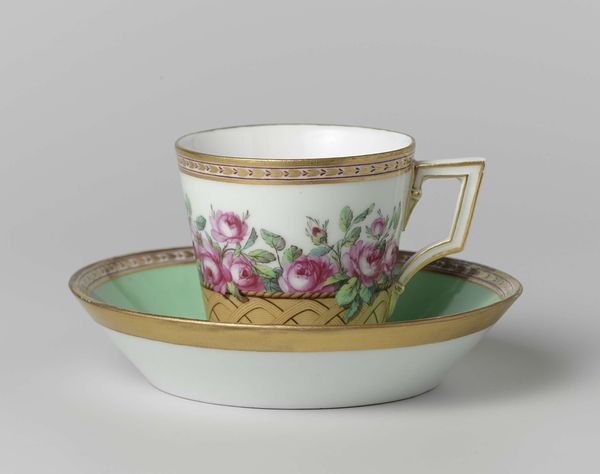
ceramic
#
art-nouveau
#
ceramic
#
form
#
geometric
#
decorative-art
Dimensions: 11 1/2 x 9 1/2 in. (29.21 x 24.13 cm) (at handles)
Copyright: Public Domain
Curator: So, we're looking at a ceramic "Ewer" made around 1902 by Josef Maria Olbrich, currently housed in the Minneapolis Institute of Art. What’s your initial take? Editor: Clean! Very clinical, in a soothing sort of way. It makes me think of early 20th-century sanatoriums—that very specific brand of sterile beauty. Curator: Yes, and the design definitely reflects Olbrich's involvement with the Vienna Secession, aiming for a gesamtkunstwerk or total work of art where function and aesthetics blend seamlessly. These types of ceramics highlight the era's embrace of form, especially its exploration of geometric elements as pure decoration. The application of patterns on functional objects can be traced back to the late nineteenth-century Arts and Crafts movement that influenced it. Editor: Totally, it's like functional minimalism before minimalism was really a thing. It also feels…serious? It’s ceramic, yet those sharp, little repeating shield motifs are very authoritative somehow, as if the owner were ready to defend their water. Curator: It’s interesting that you pick up on a seriousness because the Secession artists often sought to elevate crafts to the level of fine art. Each object had to exemplify design integrity. Think of it less as a simple water set, more as an embodiment of ideals. The ewer becomes more than the sum of its utilitarian use. Editor: I get that. And that off-white...it’s just shy of pure, but not quite antique. It evokes the intention. Someone obsessed over this shade to imply purity but within our earthly experience of living and its materiality, not divine perfection. You know? What do you think the set might've held beyond water? Curator: Well, such sets were generally used for washing, often displayed in a bedroom setting for the rituals around sleeping. Olbrich was deeply committed to creating integrated environments. One can imagine that it would have played its part as a functional element in interior design with an appeal to simplicity. Editor: Absolutely, the red makes the piece pop and almost dance within the austere simplicity of the objects. The geometry is lovely. Curator: Indeed, I appreciate how this Ewer offers us an opportunity to reflect on design as an exercise in creating social value and also think about the changing relationship between design and the art museum. Editor: Exactly! It's this fascinating tension that keeps it alive.
Comments
No comments
Be the first to comment and join the conversation on the ultimate creative platform.
